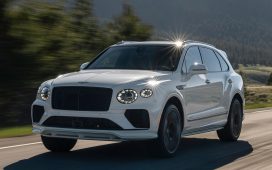ATLANTA, Ga. — The Federal Reserve held its benchmark interest rate steady this week at about 5.4%, but auto loans continue to rise. The average rate for a loan on a new vehicle approached 10% in October, and the average rate for used cars nudged past 14%, according to Cox Automotive.
“While the Fed waits to see how inflation trends, consumers and businesses may see their rates move even higher,” Cox Automotive Chief Economist Jonathan Smoke said in a statement following Wednesday’s Fed meeting.
Even with the Federal Reserve holding rates steady, auto loans could continue to climb 0.5 to 1% because of the Fed’s liquidation of Treasuries and mortgage-backed securities, Smoke said. Consumer rates on auto loans have increased by about 5 percentage points since the Federal Reserve began increasing short-term interest rates last year.
“The economy has resisted a recession thus far, while the auto market has benefitted from pent-up demand,” Smoke said, adding that the trend may not last through next year if auto loan rates continue to rise.
For now, new vehicle sales are surpassing expectations. They increased almost 4% in October, despite the United Auto Workers strike against the Detroit Three automakers slowing production. The increase came as new vehicle inventories grew from a year earlier, when supply chain issues and a computer chip shortage were constraining new vehicle supply.
Smoke noted that new vehicle prices have moved slightly lower since peaking last December. The average transaction price now stands at $47,899 — 0.7% less compared with a year earlier. Used cars have also returned to their normal depreciation cycle, following a year of price spikes resulting from a lack of new car inventory.
The lower prices, while slight, have led to a modest improvement in vehicle affordability despite higher rates, Cox said.
Still, borrowers are showing signs of struggle. The default rate on auto loans was 31.7% higher in September compared with a year earlier, according to a new study from Automoblog.net. In the third quarter of 2023, the average new car payment was $736 per month — a 4.6% increase compared with a year ago.
While mortgages are the largest category of debt for Americans, in September auto loans surpassed student loans as the second largest consumer debt burden. Auto loan debt was valued at $1.582 trillion, compared with $1.569 for student loans, according to the Federal Reserve Bank of New York.











